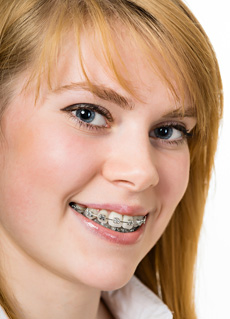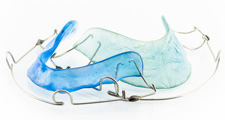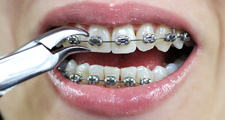
Diagnosis and Correction of Malocclusion
Occlusion is a term that describes the alignment of teeth and the way upper and lower teeth fit together (bite). Dental malocclusion refers to the situation in which the teeth from the upper and lower arches come together improperly when the mouth is closed. Perfect occlusion would have all upper teeth fitting slightly over the lower teeth; the point of the molars fitting the grooves of opposing molars; and all teeth aligned, straight and evenly spaced.
Class II Malocclusion, or overbite, occurs when the lower half of the jaw is too small, thusly making the upper jaw hang over when shut. According to the Angle Classification of Malocclusion, the opposing Class III Malocclusion occurs when the lower half of the jaw is larger than the upper half: underbite.
Malocclusion is most commonly a product of genetics. Innate teeth and jaw disproportion may lead to overcrowded teeth or abnormal bite patterns. Malocclusion also forms with extra teeth, irregularly shaped teeth, impacted teeth or lost teeth. Birth defects, in addition, can contribute to malocclusion.
Dental malocclusion can also be acquired during infancy due to thumb-sucking, tongue thrusting, bottle shapes and the prolonged use of pacifiers. Later in life, ill-fitting dental fillings, crowns and orthodontic appliances may result in malocclusion as might dental trauma after an accident.
Orthodontists recommend correcting malocclusion as it hinders proper chewing, renders teeth harder to brush and clean, and thus leads to cavities and periodontal (gum) disease. Malocclusion can be corrected for aesthetic as well as functional reasons; orthodontic treatment improves a person's ability to chew as well as his or her smile and confidence.


